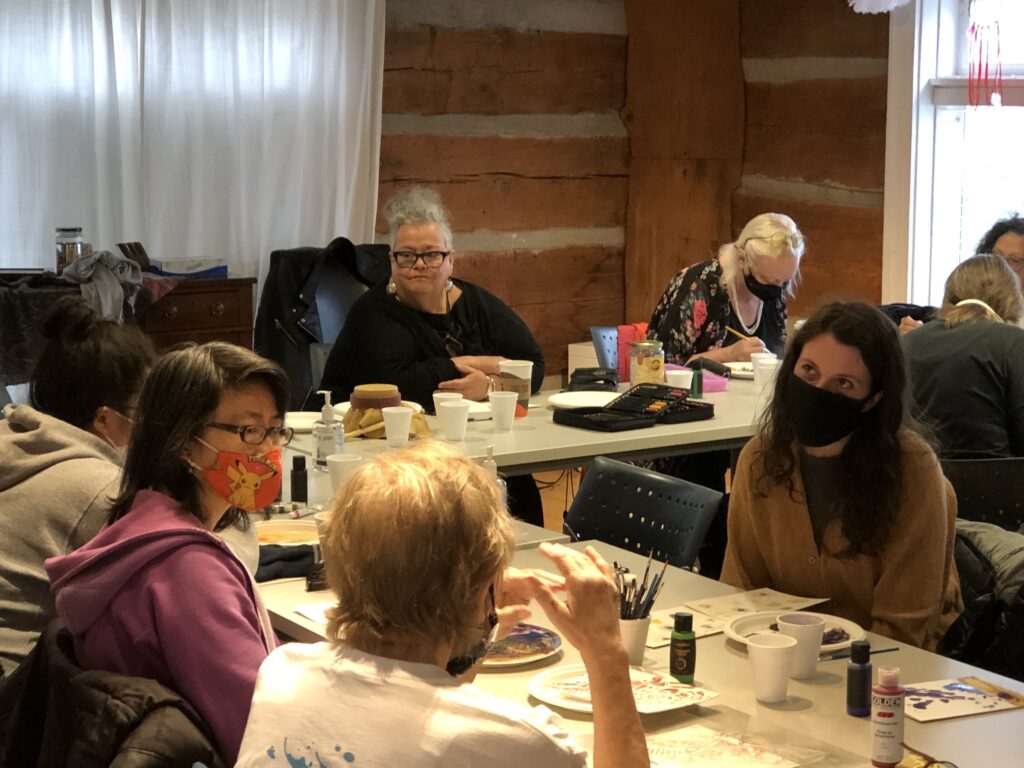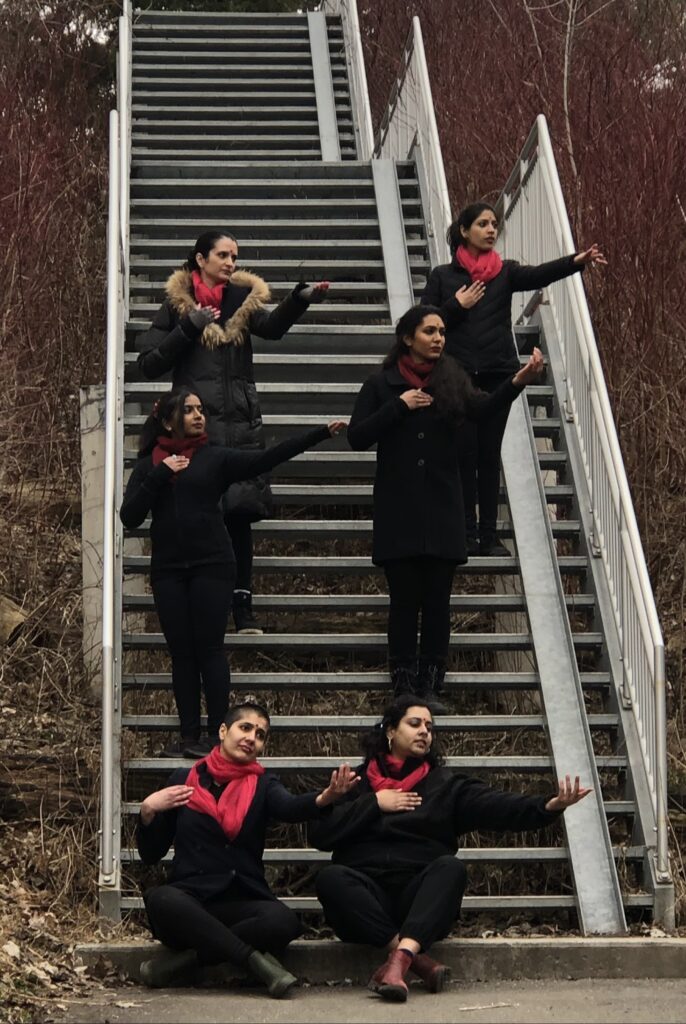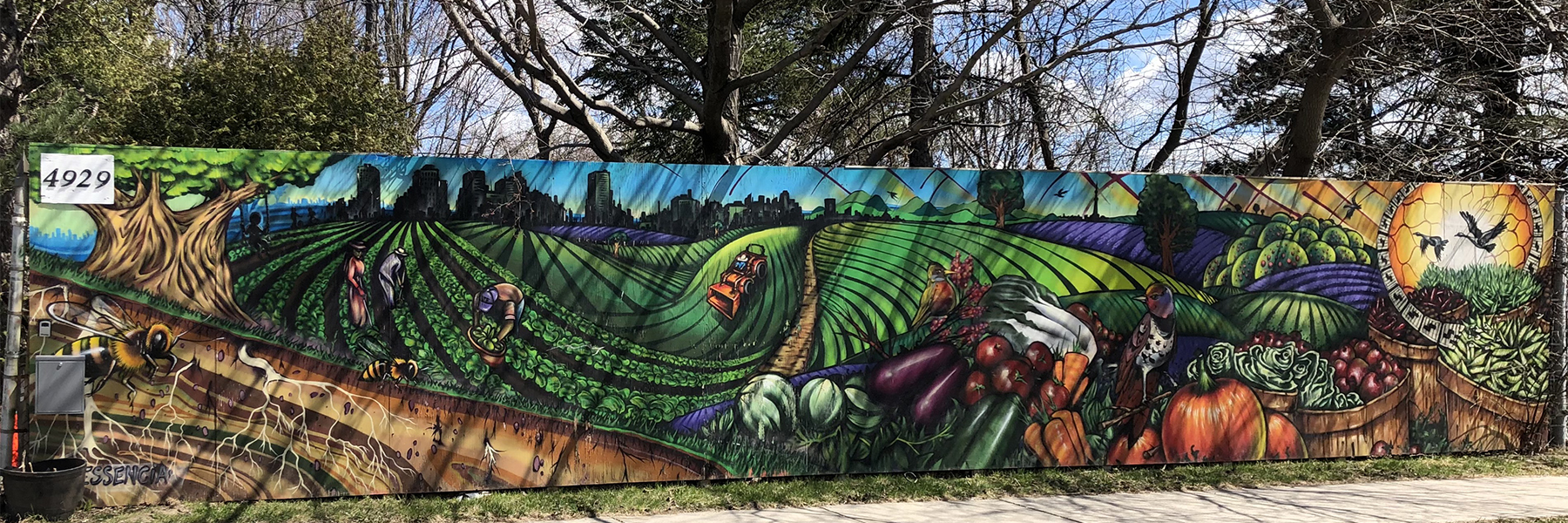A workshop on April 23 that was preceded by two walks the week earlier, highlighted through creative expression Indigenous people’s sacred connection to moving water and the earth.
On Saturday, April 23, Skennen’kó:wa Gamig, the House of Great Peace, located on the Keele Campus hosted a workshop by Taǫmęˀšreˀ/Catherine Tàmmaro, seated Spotted Turtle Clan utrihǫt or FaithKeeper and member of the Wyandot of Anderdon Nation, Wendat Confederacy. Elder Tàmmaro guided a full house of participants in exploring through creative expression the sacred connection to moving water and its vast importance in life. The workshop, uⁿdawaʔ (current), was part of a program titled Black Creek Walks, Talks and Dances organized by Brian MacLean of Lost Rivers and student and spoken word poet Ayesha Khan of York University, with the support of Elder Tàmmaro, Faculty of Environmental and Urban Change Professor Anders Sandberg and M-DO/Kathak Toronto instructor Joanna de Souza. The event was sponsored and appeared during a week of community engagement events by Myseum Intersections 2022.
Elder Tàmmaro’s workshop supported an “activation of intention” to connect participants with the Black Creek in unique and innovative ways, among them using mud and water from the creek to incorporate in the paintings. The workshop was also attended by Carolyn King, former Chief of the Mississaugas of the Credit First Nation whose Moccasin Identifier Project constituted an integral part of the day’s events. The Moccasin Project involves bringing awareness of the presence of four Indigenous linguistic groups in Ontario, the Cree, the Anishinaabe, the Huron-Wendat/Wyandot(te), and the Seneca, by planting moccasin prints of removable ink on the ground.

The workshop was followed by a walk across the campus where the moccasin stencils were placed at various sites along the way. One major feature of the walk was a celebration of the Ancestral Huron-Wendat village site east of Black Creek under the hydro-electric power line corridor just south of the campus. There the participants formed the walls of a longhouse to give an impression of its layout, size and functions. They were also told about the extent of the village itself and the palisade that surrounded it, as well as the Three Sisters farm fields that extended beyond it and onto the campus. The highlight of the walks was Elder Tàmmaro’s homage in words and song to her ancestors considered to be still embedded in the memory of the land. Both Elders Tàmmaro and King spoke with love about feeling the presence of their ancestors at this and similar sites.

The workshop event was preceded by two walks that took place the previous week, one centred around the theme of animism and art where de Souza and Khan and a troupe of Kathak dancers paid respect to the ancient Goddess सरस्वती or Saraswati, the Hindu goddess of knowledge, music art and wisdom. The group danced at various points of Black Creek, honouring the feminine and the sacredness of the creek and its water, culminating in a collective dance with participants on the edge of the creek. The event itself was preceded by a smudge and dance by Wyandot dancer Nichole Leveck, accompanied by singer/drummer Isaiah Cada.
The second walk led by community member Brian MacLean on April 17 focused on food, land and water. It took walkers to Black Creek Community Farm, a vegetable garden by a Vietnamese immigrant, York University’s community Maloca Gardens, the flower garden by 96-year-old local resident Rudy Riske on the east banks of Black Creek, and the corn fields of the Ancestral Huron-Wendat that covered the area in the 16th century.
The walks drew a large attendance and promoted a closer connection between York University and the surrounding community, including awareness of the First Peoples, especially the Huron-Wendat, who once lived near and farmed the University grounds. Nancy Johnson, cultural programs assistant at York’s Centre for Indigenous Students Services, facilitated the use of Skennen’kó:wa Gamig for the workshop.


